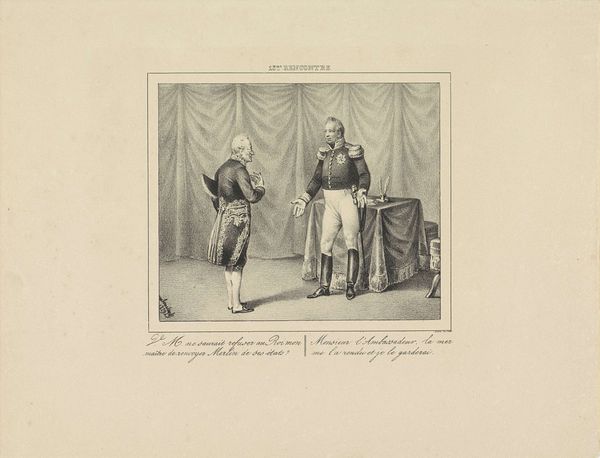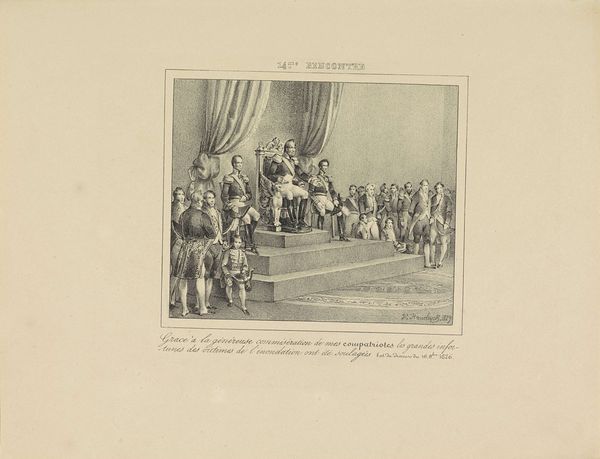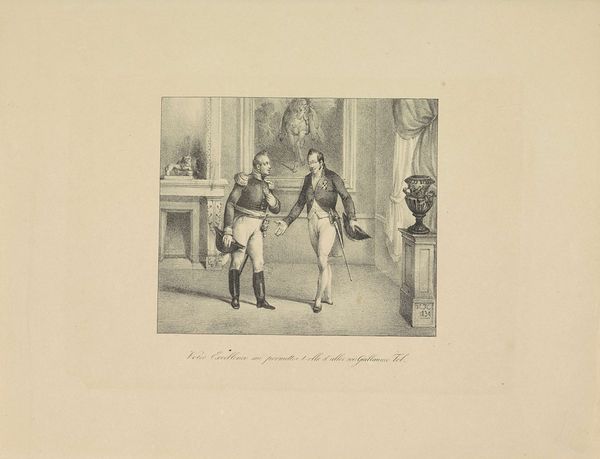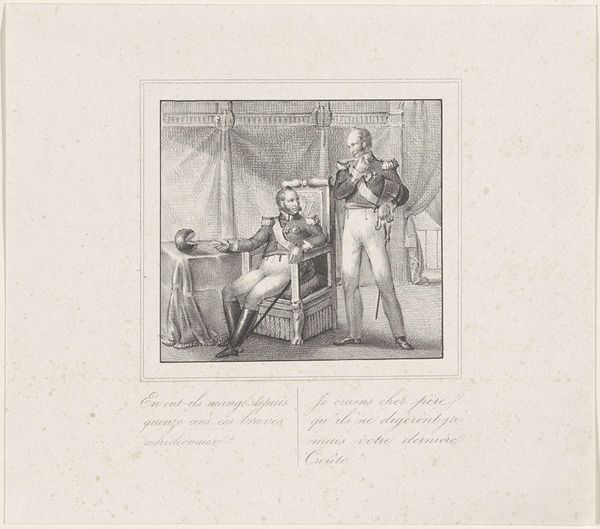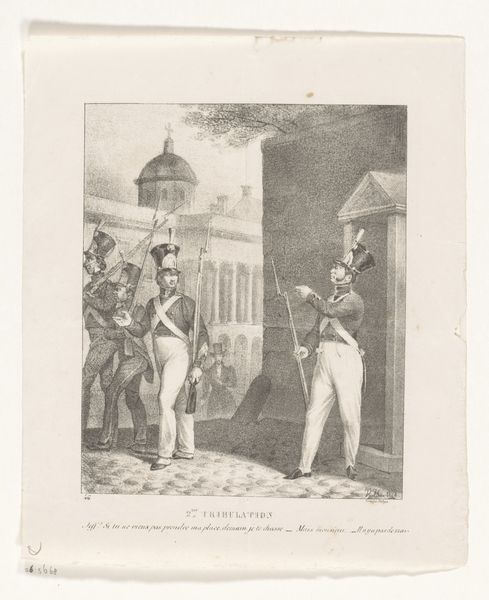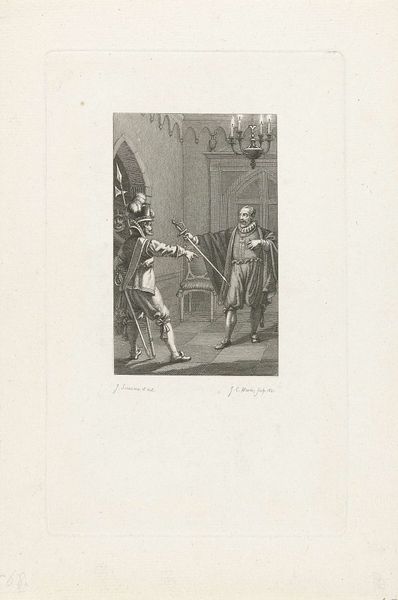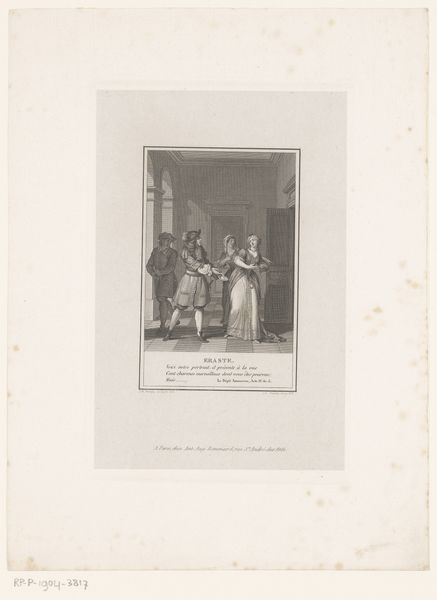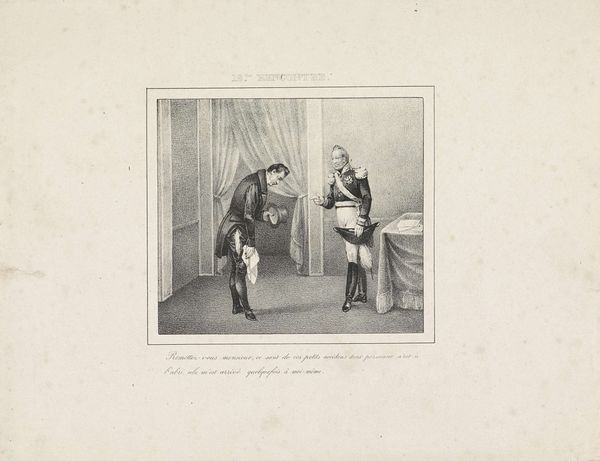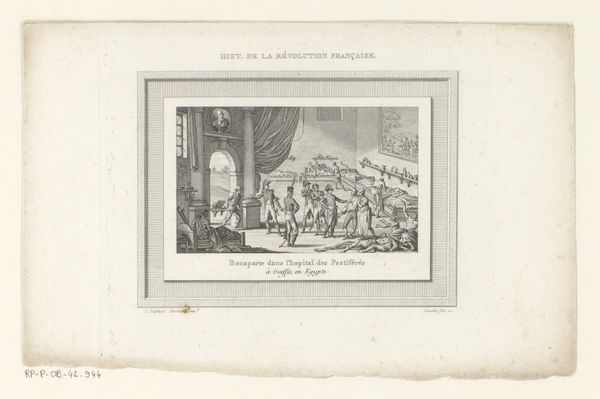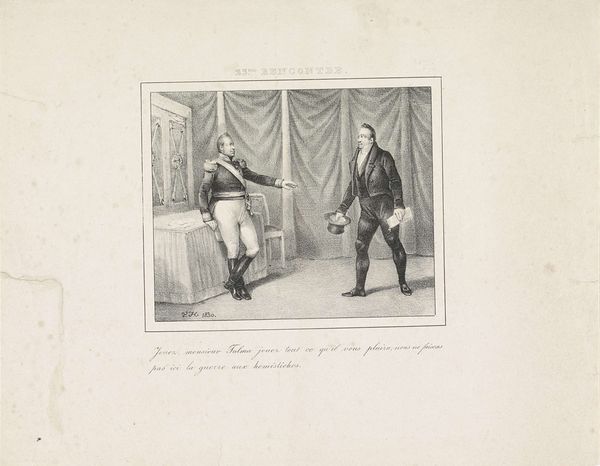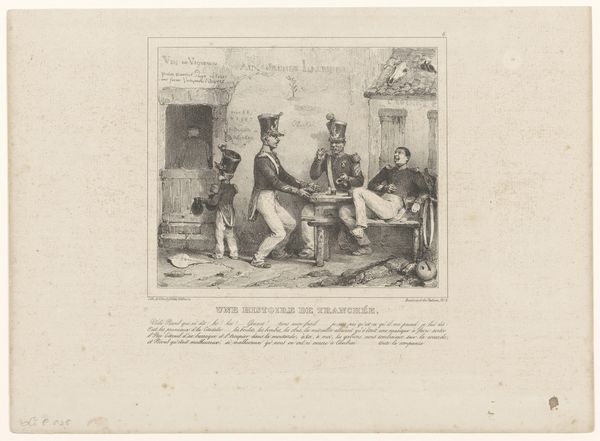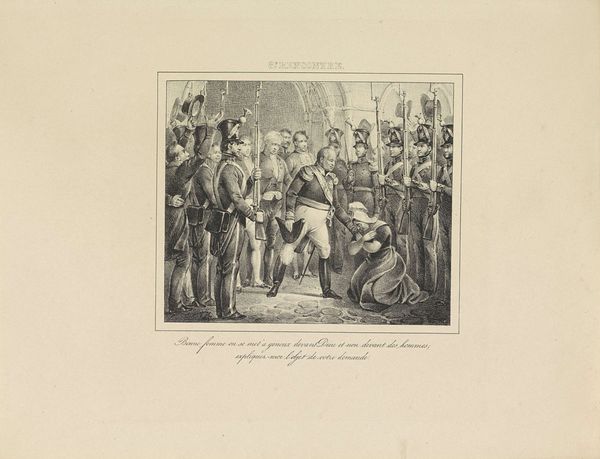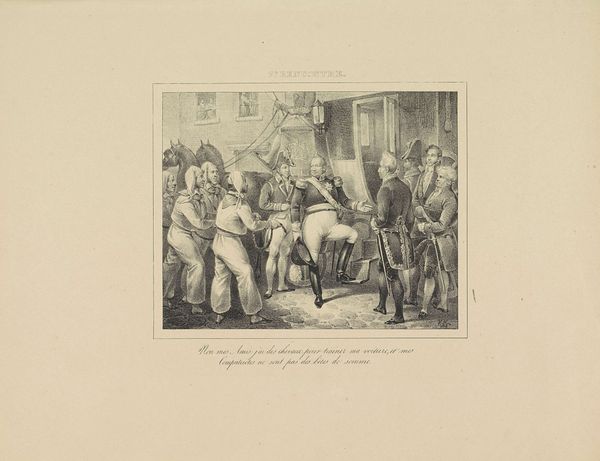
print, engraving
#
neoclacissism
# print
#
old engraving style
#
personal sketchbook
#
genre-painting
#
history-painting
#
academic-art
#
engraving
#
realism
Dimensions: height 235 mm, width 305 mm
Copyright: Rijks Museum: Open Domain
Editor: Here we have “Koning Willem I bestraft een vleier,” or “King William I Punishing a Flatterer,” a print from 1829. The engraving style really lends itself to the starkness of the scene, almost like a political cartoon. It makes me wonder about the historical context. What’s your take on this piece? Curator: Ah, a print brimming with the delicious tang of power dynamics! You see the crisp lines of Neoclassicism clashing a little with the blossoming Realism—like a general reluctantly trading his wig for a more practical haircut. Consider William I, not just as a king, but as a father figure to a very young, rather unruly Belgium. Editor: Unruly how? Curator: Well, Belgium was, at that time, part of the United Kingdom of the Netherlands, and simmering with revolutionary ideals. Now look at our flatterer grovelling—is he genuinely remorseful, or merely playing the game, hoping to sneak a rebellious idea past the King's defenses? Perhaps William is teaching him that leadership demands honesty above flattery. Do you get that feeling from the way he looks away? Editor: That makes so much sense! It adds layers to the print. Initially I only perceived what seemed to be an angry ruler, not a calculated politician managing unrest. Curator: Precisely! Art often invites us to be detectives. Prints like these are historical breadcrumbs; some may say this scene is of small consequence, but perhaps that is its allure. Editor: This print really taught me to look past the obvious narratives presented by an artwork and look into some historical elements. Thank you.
Comments
No comments
Be the first to comment and join the conversation on the ultimate creative platform.
